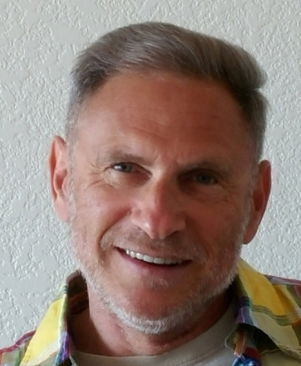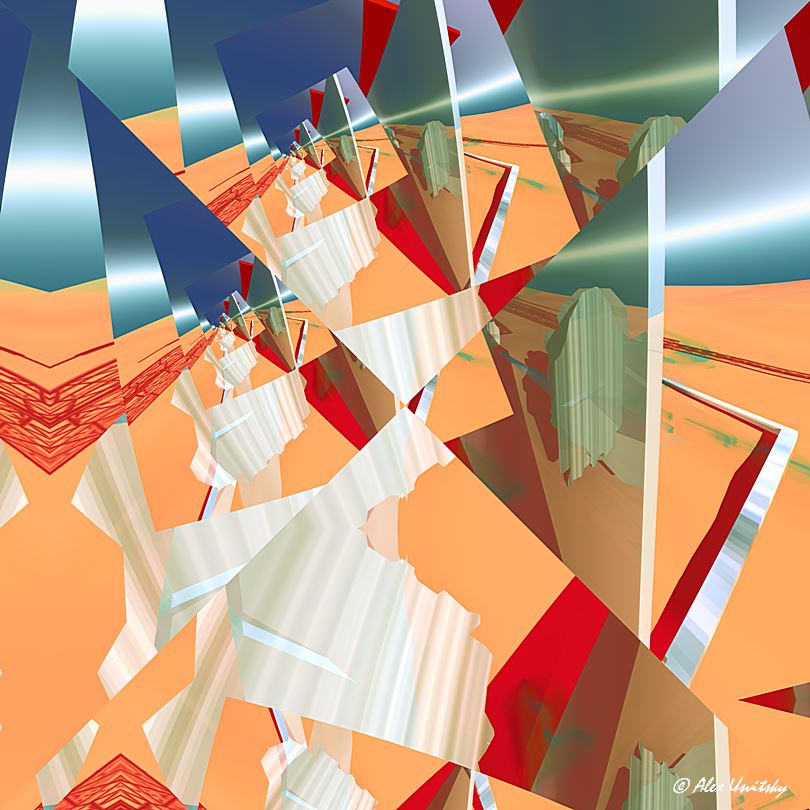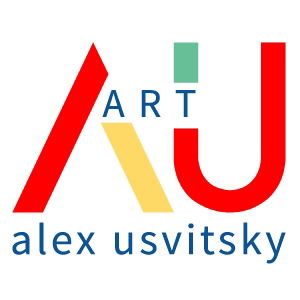biography

I was born in Leningrad, USSR where I received training in traditional watercolor and freehand drawing. I have been painting for most of my life, early on experimenting with "automatic painting" techniques inspired by surrealist and abstract expressionist painters of the 20th century. The most fascinating of these techniques to me has always been Decalcomania, ever since I stumbled on it by accident in the late 1970's. One day I was working on a watercolor painting which was not going well, so I folded it in half and was about to throw it into the trash can. As the painting landed in the trash it opened up to reveal a symmetrical pattern with a fold in the middle displaying a previously unknown to me texture. The texture seemed so sophisticated that I knew I could never match it using a brush. I was amazed to see my doomed painting that only moments before appeared hopelessly dull and uninspiring suddenly turn into a beautiful and vibrant image that I felt compelled to keep. That's how I got started with Decalcomania which quickly became my new obsession.

Decalcomania is the technique of placing wet paint between two sheets of paper and applying pressure resulting in a random texture created by chance. Free from artist's control it automatically produces unique and often beautiful patterns seemingly impossible to replicate. Normally this technique requires no brushes but occasionally a mostly abstract pattern would provide hints of some shapes that could be enhanced and developed into a representational object using a brush. Most often it would suggest some rock formations or evoke surreal images of vegetation and even faces. This visual experience is not unlike seeing strange shapes or mysterious creatures in the clouds. It excites imagination and can quickly turn into a meditation session where the subconscious rules and the mind is free of all constraints, just like in a dream.

After immigrating to the United States in 1982 I graduated from the College of Environmental Design at UC Berkeley and was fortunate to get a job at one of the most innovative architectural design firms based in the Silicon Valley. While at work I struggled with the limitations of early design software, at home watercolor continued to be my hobby mostly because it enabled me to unwind and enjoy the freedom of the medium. These were the mid-1990's just before the arrival of digital age and I began to explore some new techniques using color Xerox, Polaroid image transfer and a computer. Regardless of the medium, by that time I already got into a habit of starting every piece of artwork by first creating a chaos with no conscious effort on my part. This approach clears the way to move forward without waiting for inspiration or trying to come up with the subject matter - the two best friends of procrastination. I simply invite the medium to take the lead and totally leave it to chance where it will take me.
I enjoy exploring a variety of architectural 3D modeling programs many of which are not traditionally designed for "painting" or "art". I usually start with a virtual scene, populate it with random images and 3D shapes and apply colors and textures. Using tools that allow free movement within the scene, I "fly around" to capture snapshots that are exported as image files. These exported image files become my paintings. Using a computer and a camera I have been creating digital paintings since the early 2000's. Many of my works are privately owned.



